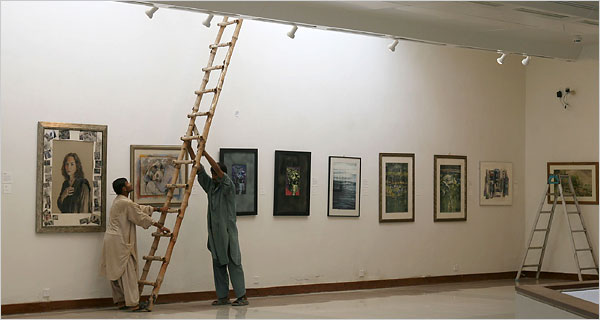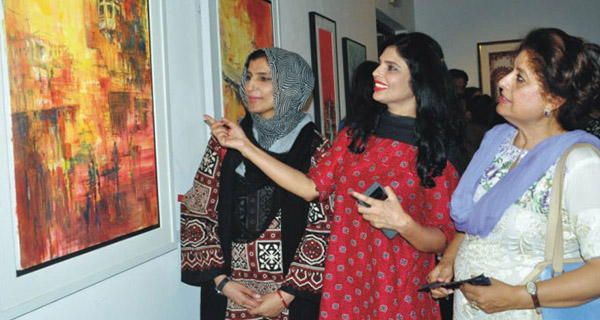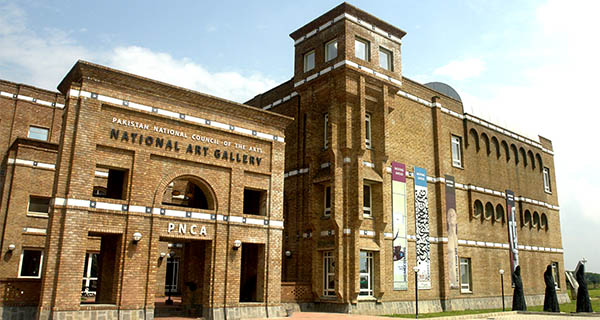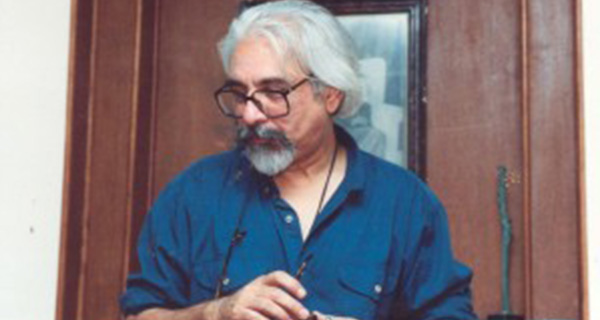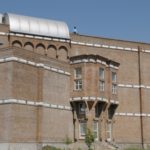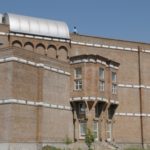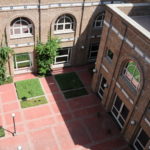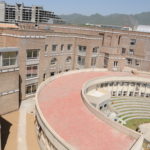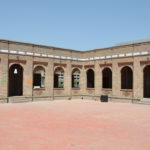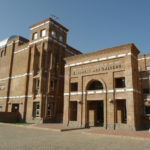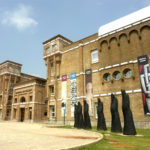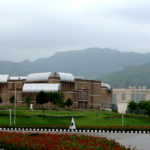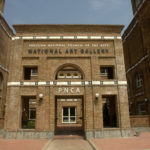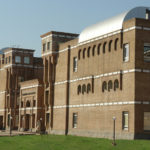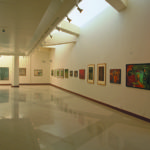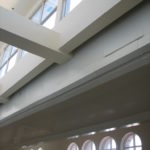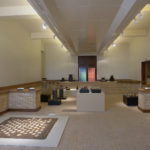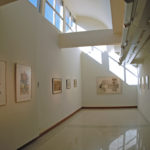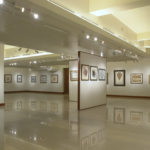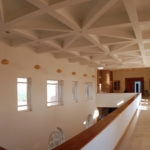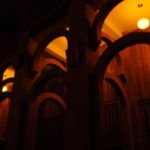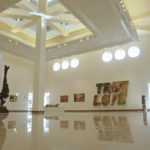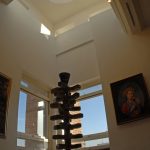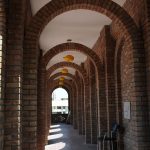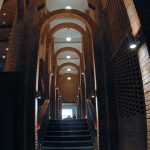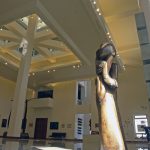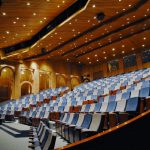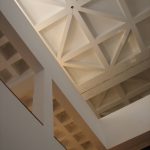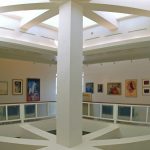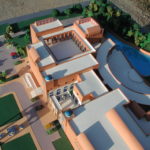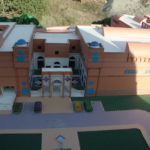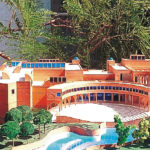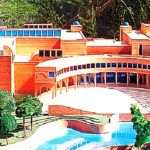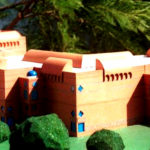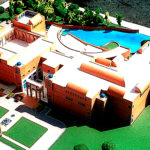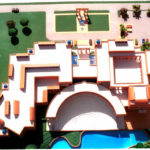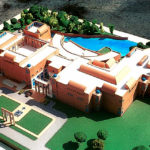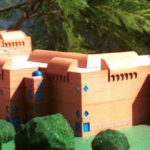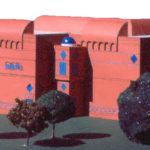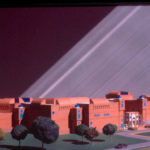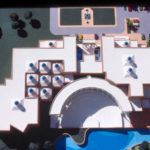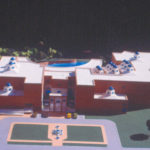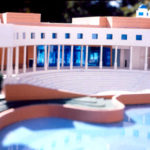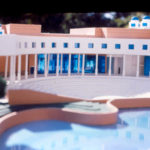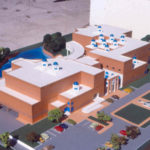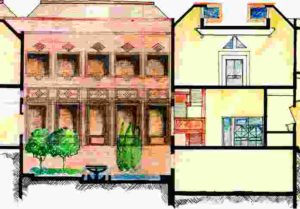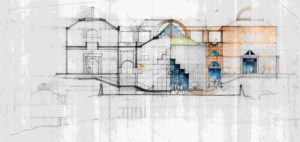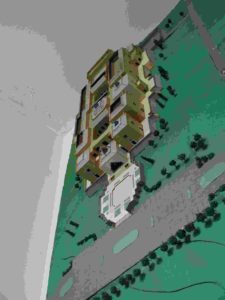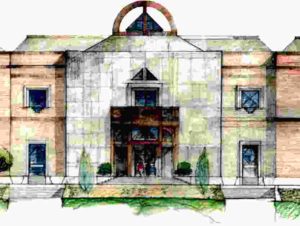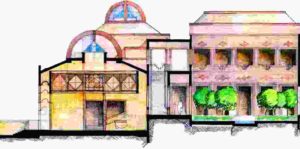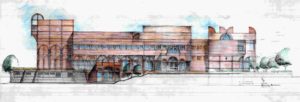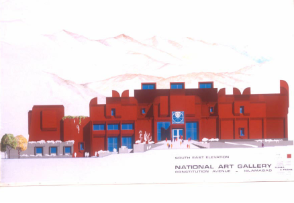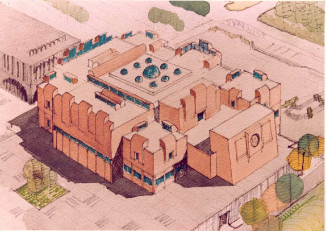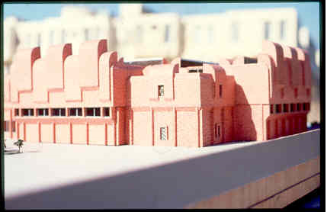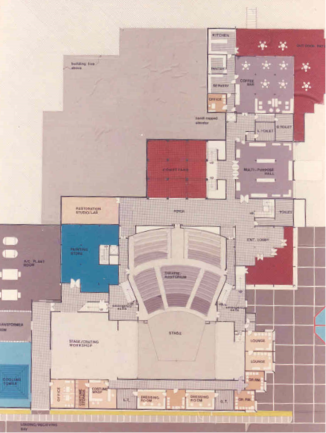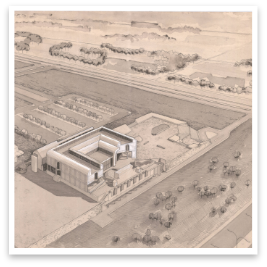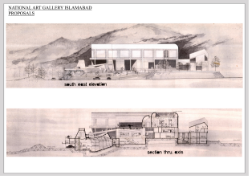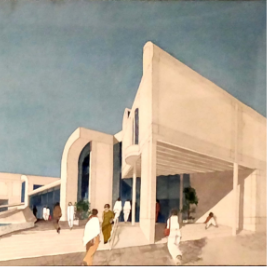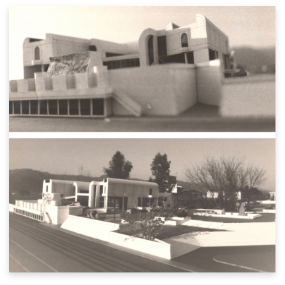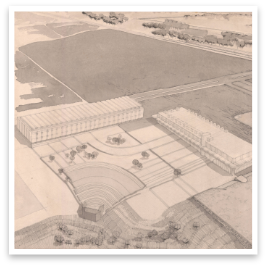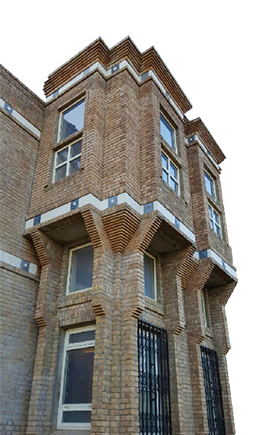
NAG DESIGN HISTORY
NAG


N
A
G
NAG
DESIGN
HISTORY
VIDEOS
GALLERY
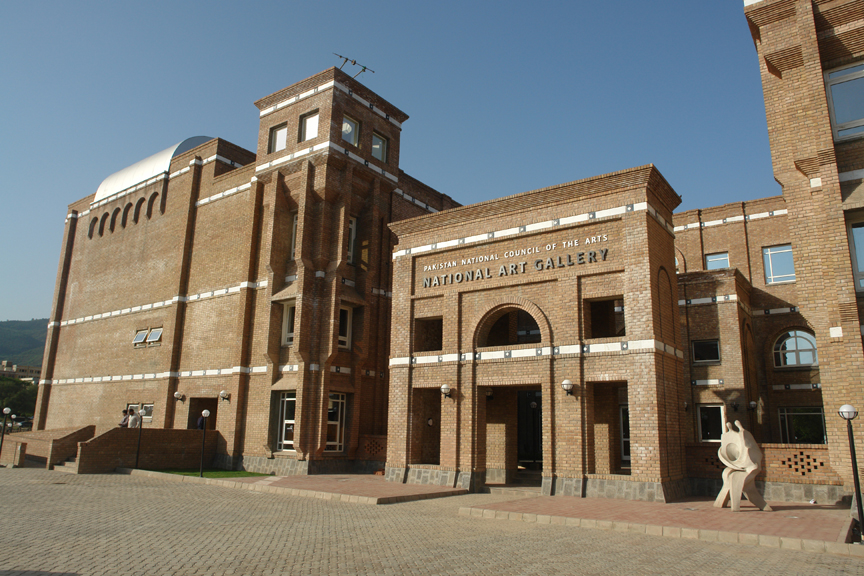
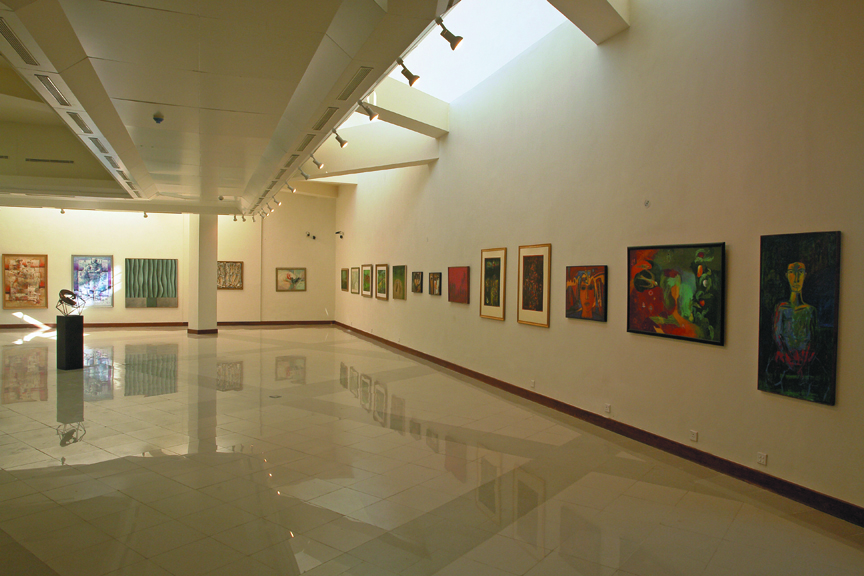
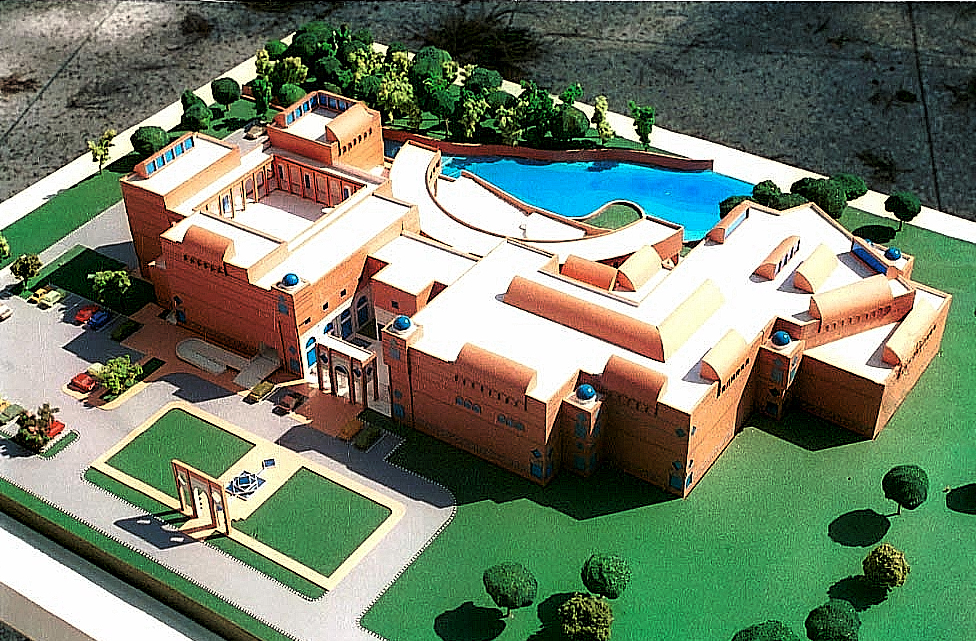
- OLYMPUS DIGITAL CAMERA
- OLYMPUS DIGITAL CAMERA
NATIONAL ART GALLERY
In 1972 Prime Minister Zulfiqar Ali Bhutto appointed Faiz Ahmed Faiz as chairman of Pakistan national council of Arts and crafts which later on was split into Pakistan National council of arts and Lok Virsa as two different departments of the same cultural parentage. In 1981 the first competition was initiated and was awarded to Naqvi and Siddiqui. In 1989 the people’s party government rejected the previous design parameters asked the same qualified architects to redesign under new guidelines. The participating architects were Naqvi and siddiqui, Nayyar Ali Dada, Habib Fida Ali, Suhail and Pasha. An international jury of architects, artists and theatre experts judged the entries and declared us the winners.
From 1990 to 1996 the project was closed from lack of funds, changing of sites form Lok Virsa, F9 Park and the present site was going on because PM secretariat took over the original site. In 1996 the foundation stone was laid and then financial difficulties, government changes kept the unfinished structures just standing. In 2005 Gen. Musharraf took notice and the project was re started at the cost of 530 million rupees. Inaugurated in August 2007 with a Grand National exhibition in all Galleries
The NAG consists of 13 galleries comprising of two periodical galleries, 5 honors galleries and 6 galleries for permanent collections. It also has a 425 seat theatre along with a 30 seat lecture theatre spaces for music, dance and visual arts, classes, children play area and art workshop, restoration laboratories and storage for reserve collection in controlled environment.
The national art gallery also has an administrative wing which houses the national council of the art offices.
SPIRIT OF THE BUILDING:
The national cultural complex of which the National Art Gallery is the first building constructed, by its very nature has the responsibility of being a monumental building. It represents the pride that the people place in such buildings and its rests among other buildings on Constitution Avenue which have a similar monumentality, including the Presidents House, the National Library, the National Assembly, the National Museum, the Armed Forces Museum and the Supreme Court Building. All these buildings must state clearly the aspiration of the nation.
And yet the National Art Gallery, while having monumentality, differs in spirit from the Presidents House which is the seat of power, or the National Assembly, where the people’s will and power rest. The National Art Gallery does not compete with these but have a poised grandeur of its own, which allows a sense of participation of the people. It invites an involvement of the people, and states clearly that it is a building of culture. A grand, massive façade is no doubt imposing, but the human scale loses out, and participation is daunting.
Therefore, the building we have designed, while achieving monumentality through its gradual, majestic rise and approach, keeps within itself a sense of visual surprise and humility, which we hope separates its purpose from those of the grand buildings around it.
